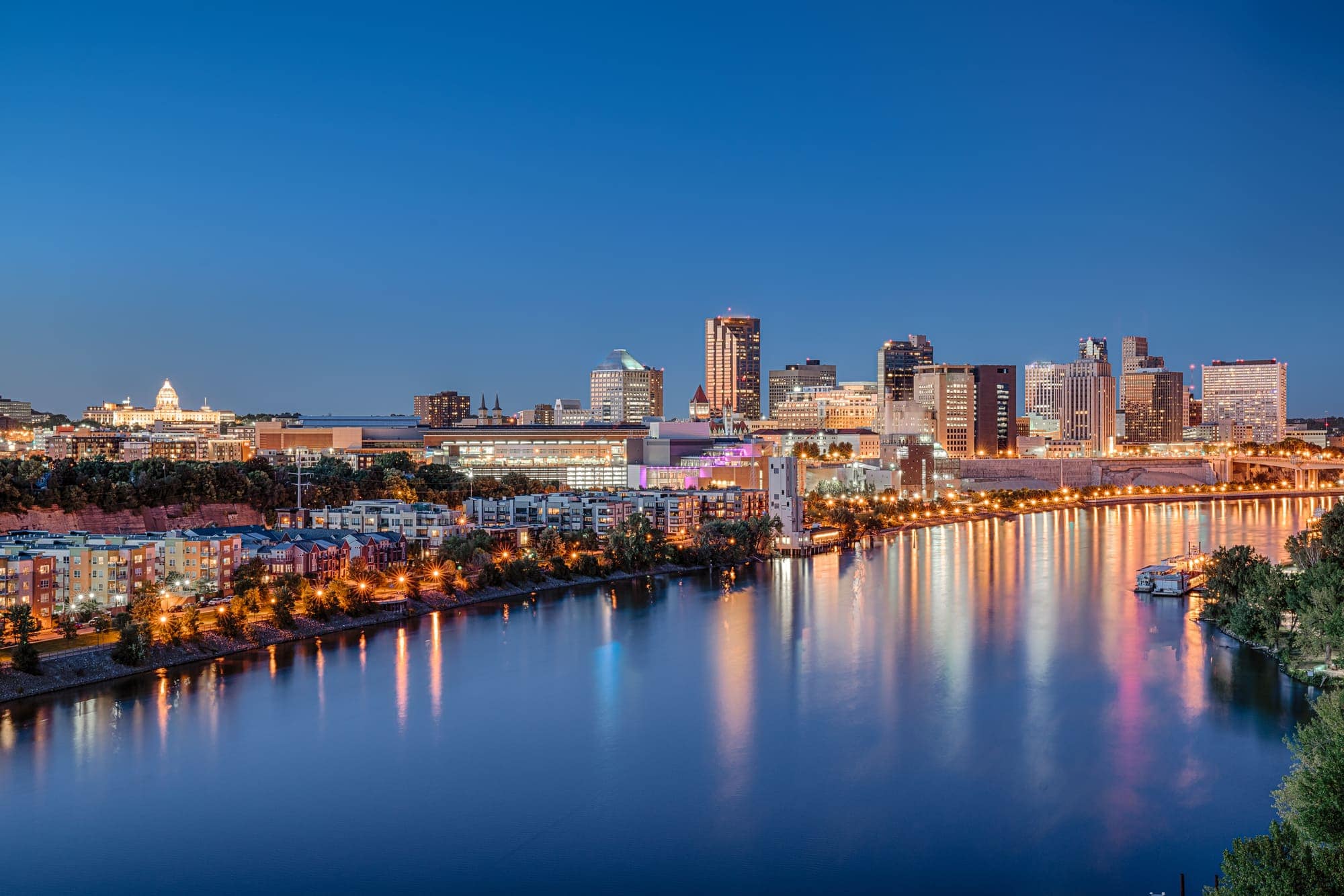Dozens of St. Paul neighborhoods offer something unique to people moving there. Whether you are looking for a perfect home as a retired couple or searching for your very first home purchase in Minnesota, St. Paul has something for everyone.
11 St. Paul Neighborhoods To Live In
So, you’re considering moving to one of the neighborhoods of St. Paul, eh? This city has got it all: charming tree-lined streets, a thriving art scene, and enough hot dish to warm your taste buds. Whether you’re looking for a bustling urban landscape or a peaceful suburban hideaway, a neighborhood here is just waiting to welcome you with open arms.
We have researched for you, so you can check out the best places to put down roots in St. Paul. Here are the best 11 St. Paul neighborhoods to live in.
Macalester Groveland
Population: 16,310
Median Income: $152,892
Median Home Price: $444.9K
Macalester Groveland is a neighborhood southwest of downtown St. Paul that is commonly regarded as the top place to live in the city. This picturesque neighborhood has high marks for:
- Nightlife
- Safety
- Housing
- Family-friendly atmosphere
- Public school system
- Health & fitness opportunities
- Commute to work
- Outdoor activities.
Residents here enjoy the coffee shops, parks, bars, and favorable public school system. Common features of this neighborhood include the Mississippi Gorge Regional Park bordering the Mississippi River (which means river views galore), Macalester College, and the University of St. Thomas.
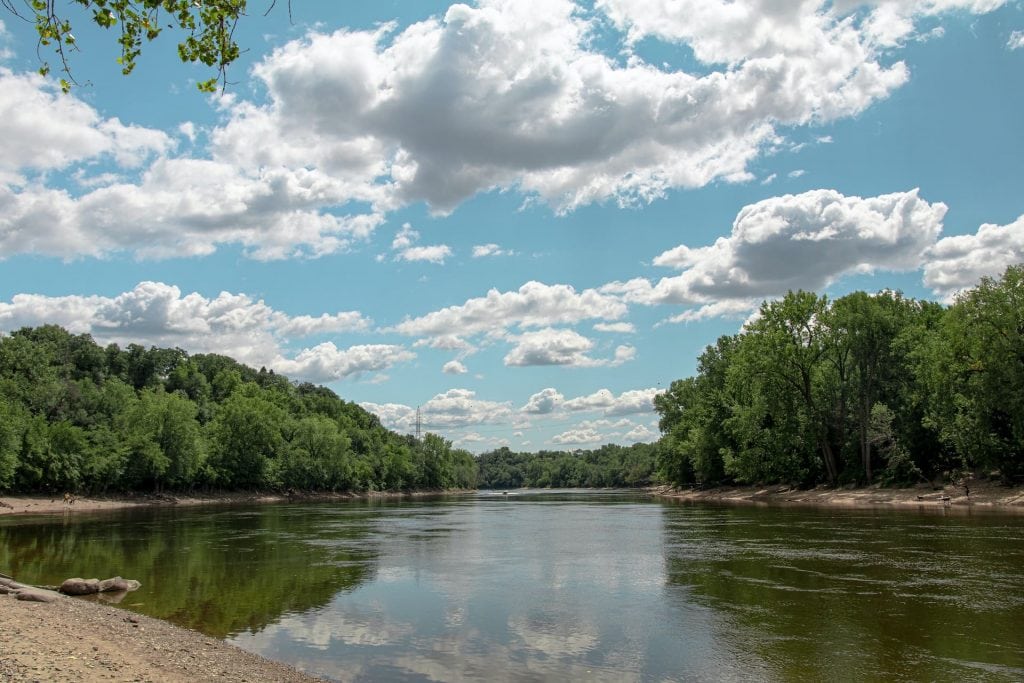
Most residents here own their home (71%) compared to 29% renting their property. The real estate market in this neighborhood shows a drop in home prices compared to last year (17%), with most homes selling after 26 days.
Being a historic neighborhood (and one of the safest neighborhoods in town!) The housing market here is very competitive, with many Macalester Groveland homes for sale getting more than one offer and hot homes selling for 6% above the list price.
Summit Hill
Population: 7,640
Median Income: $141,731
Median Home Price: $446K
Summit Hill is a neighborhood in the southwestern section of St. Paul that features a nice mix between the St. Paul suburbs and a city feel.
This friendly neighborhood ranks among the top two to move to in St. Paul due to the proximity of the highway, city, local restaurants, shops, cafes, and nightlife on Grand Avenue. Residents here can easily get to suburban towns, like St. Louis Park, in no time at all. Some of the common features of this neighborhood include:
- Linwood Park
- William Mitchell College of Law
- St. Paul Academy Goodrich Campus.
The top public schools in this area are the Math and Science Academy, Nova Classical Academy Upper School, and Great River School.
The real estate market in Summit Hill has shown a drop in prices since last year, falling 0.51%. Furthermore, homes for sale in Summit Hill remain approximately 61 days on the market before changing hands, which is down 87 days from last year. The housing market is competitive, with some homes getting multiple offers and the average home selling for 2% below the list price.
Battle Creek Highwood
Population: 21,672
Median Income: $83,079
Median Home Price: $217.8K
Battle Creek Highwood is a favorite neighborhood in Ramsey County that provides a demographic between urban living and St. Paul suburbs and residents owning and renting their homes. This neighborhood is nestled in the southeast section of St. Paul, providing great transit options and proximity to downtown St. Paul. The most common features of this neighborhood are:
- Pig’s Eye Regional Park on the water
- Highwood Hills
- Green spaces
- Parks
- The usage of Route 94 to get in and out of the city if needed.
There are numerous schools in this area, such as the Math & Science Academy, St. Croix Preparatory School, and Yinghua Academy.
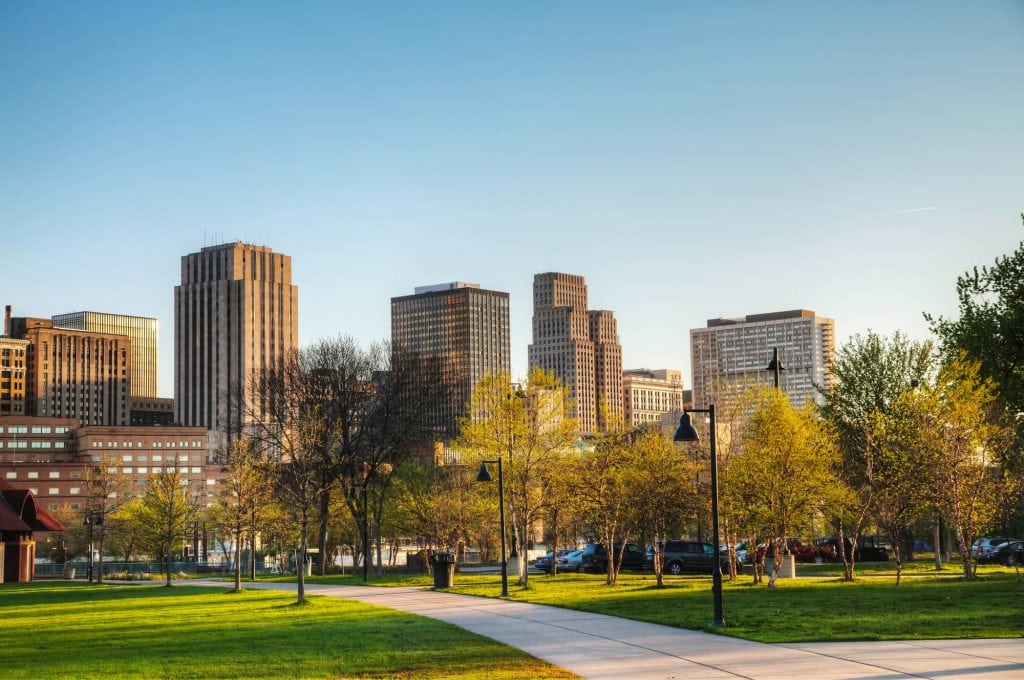
The real estate analysis in Battle Creek Highwood shows a very competitive housing market. Prices of homes for sale in Battle Creek Highwood are down just 0.48% since last year, with homes selling in around three weeks after being listed.
Houses for sale here sell for above the listing price, which makes this a seller’s market. The sale-to-list price for most properties in Battle Creek Highwood is 101.8%, with 54.5% of homes selling above the list price.
West Seventh
Population: 10,059
Median Income: $90,640
Median Home Price: $226.7K
West Seventh is one of the busiest St. Paul neighborhoods, featuring restaurants, cafes, and lower prices, making it one of the most affordable neighborhoods in the area. This is a great neighborhood for young families, couples, and young professionals who are looking to meet other similar-aged people and spend less on renting or buying a home.
The residents here are split evenly between renting and owning a home since the median rent comes to just $1,184 —which is favorable for a big city. Residents here also enjoy access to the riverfront, proximity to downtown St. Paul, Palace Recreation Center, St. Paul Public Schools, and St. Clair Rec Center.
Some of the most popular activities for residents to do while living here include:
- Having a drink at the A-Side Public House
- Checking out how beer is made at Bad Weather Brewing
- Taking a tour underground at the Wabasha Street Caves
- Bringing out their competitive side at Two Bit Game Room
- Taking a day trip to Eden Prairie
The Mississippi National River & Recreation Area also offers plenty of nature-based, family-friendly recreation, with 72 miles of boating, canoeing and additional outdoor activities. Get ready to exercise your fishing skills, and enjoy some time biking, hiking, and bird watching.
The real estate market in West Seventh is competitive, with some homes getting multiple offers. Most homes sell for 34 days on the market, with housing prices falling nearly 9% since last year.
Highland Park
Population: 16,629
Median Income: $100,967
Median Home Price: $393.9K
Highland Park typically ranks in the top 3 of Saint Paul’s best neighborhoods and the surrounding areas. Highland Park residents like about their area:
- The favorable public school system,
- The young-family vibe
- The numerous things to do, such as local cafes, restaurants, green spaces, and activities.
The main features of this nice neighborhood are the Crosby Farm Regional Park, Highland National Golf Course, Highland Park, and Hidden Falls Regional Park. Residents here also enjoy the 229 public schools serving the Highland area and the 279 private schools close to Highland Park.
The real estate market in Highland Park showed a 15.4% increase in home prices since last year, with homes selling after 22 days on average. The market here is very competitive, with most homes selling for the list price and hot homes selling 1% above the list price.
Dayton’s Bluff
Population: 17,916
Median Income: $71,951
Median Home Price: $240K
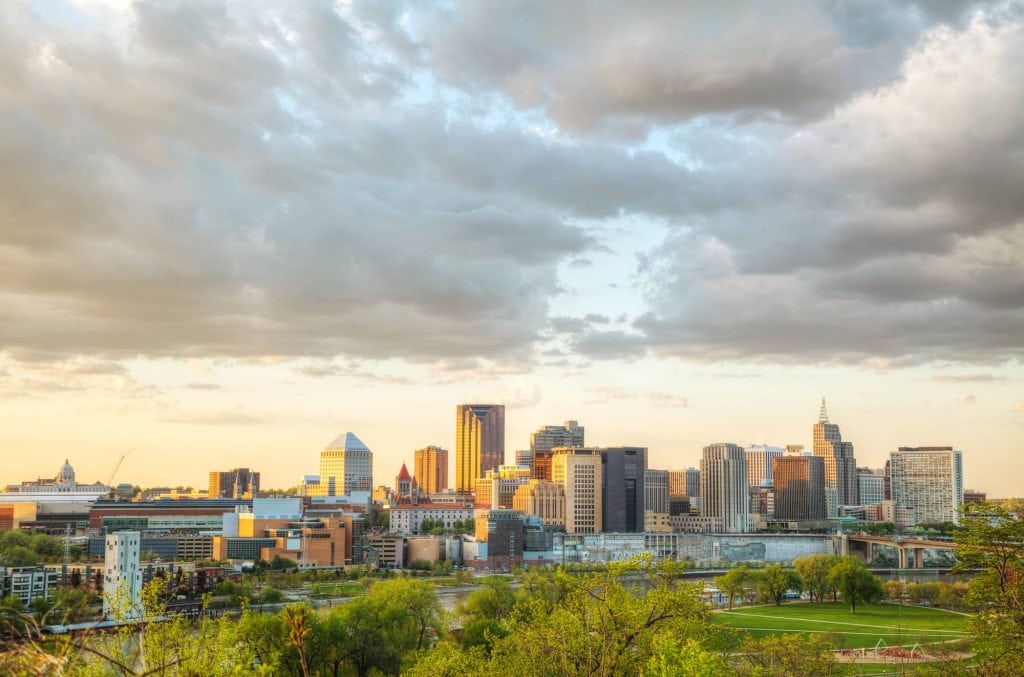
Dayton’s Bluff is located on the east side of St. Paul’s downtown. It features access to the river (and plenty of river views), Indian Mounds Park, Parkway Little League Park, Metropolitan State University, and Swede Hollow Park. Other notable features of this neighborhood are:
- The Fitzgerald Theater
- Minnesota Children’s Museum
- Roy Wilkins Auditorium
- Union Depot Station
- St. Joseph’s Hospital
- Lafayette Bridge.
- Lake Elmo is also just 15 minutes away.
Residents rate this neighborhood highly due to ample diversity, low cost of living, and young professional atmosphere. There are very low crime ratings, numerous health and fitness options, a fair cost of living, and plenty of outdoor activities to enjoy.
Local housing trends show that the real estate market in Dayton’s Bluff shows a 6.7% increase in housing prices since last year, with most homes spending 49 days on the market.
The housing market here is somewhat competitive, with some homes receiving multiple offers and average homes selling for the list price. Some of the current Dayton’s Bluff listings include condominiums for sale near 10th Street station and Fitzgerald Theater.
Como
Population: 18,465
Median Income: $88,667
Median Home Price: $252,946
Como is one of the northwestern St. Paul neighborhoods that are often considered one of the top places to buy property midway between St. Paul and Minneapolis. This neighborhood is very safe, offers tons of diversity, ample housing options, and is a good place for families to settle down. The main features of this neighborhood include:
- Bethesda Hospital
- Oakland Cemetery
- Minnesota Transportation Museum
- Como Park, Como Golf Course
- Calvary Cemetery
- Hamline University
- Como Park Zoo.
Residents here enjoy attending the Minnesota State Fairgrounds, taking their kids to the free botanical garden, walking around Reservoir Woods, and shopping at Hmongtown Marketplace.
The real estate market in Como shows a 4.5% decrease in home prices since 2022, with most homes selling after 24 days on the market (up two days since last year).
The market of homes for sale in Como is very competitive, with most homes selling for 1% above the list price, making this a favorable seller’s market. The sale-to-list prices for all home types is 101.1%, with 41.7% of homes selling above the list price.
Merriam Park
Population: 9,321
Median Income: $105,000
Median Home Price: $166K-$3.9M
Merriam Park is an older neighborhood on the outskirts of St. Paul that borders the Mississippi River. The main residents of this neighborhood are professional families and students at nearby colleges. The main features of this include:
- Numerous bars and breweries (like the Beer Hall, Neighborhood Cafe, Augustine’s Bar, and Bar Brigade)
- Cultural attractions (like Town and Country Club and City Sound)
- The University of St. Thomas
- Shadow Falls Park
Residents of Merriam Park state this neighborhood is great for families with pets and those who enjoy walking everywhere. Parking is easy, kids can play outside, and families can walk to restaurants at any time of the day.
The public schools serving this area are Galtier Magnet Elementary School, Groveland Park Elementary School, Murray Middle School, Higher Ground Academy, Como Park Senior High School, and many others.
The real estate market in Merriam Park shows a 26.8% decrease in home prices since last year, with most houses selling in 21 days. The housing market is very competitive, with most homes getting many offices and average homes selling 2% below the list price.
Popular real estate in Merriam Park include large single-family homes with three-to-four generously-sized bedrooms, renovated living spaces, and modern finishes and fixtures.
Hamline Midway
Population: 11,437
Median Income: $88,822
Median Home Price: $224.9K
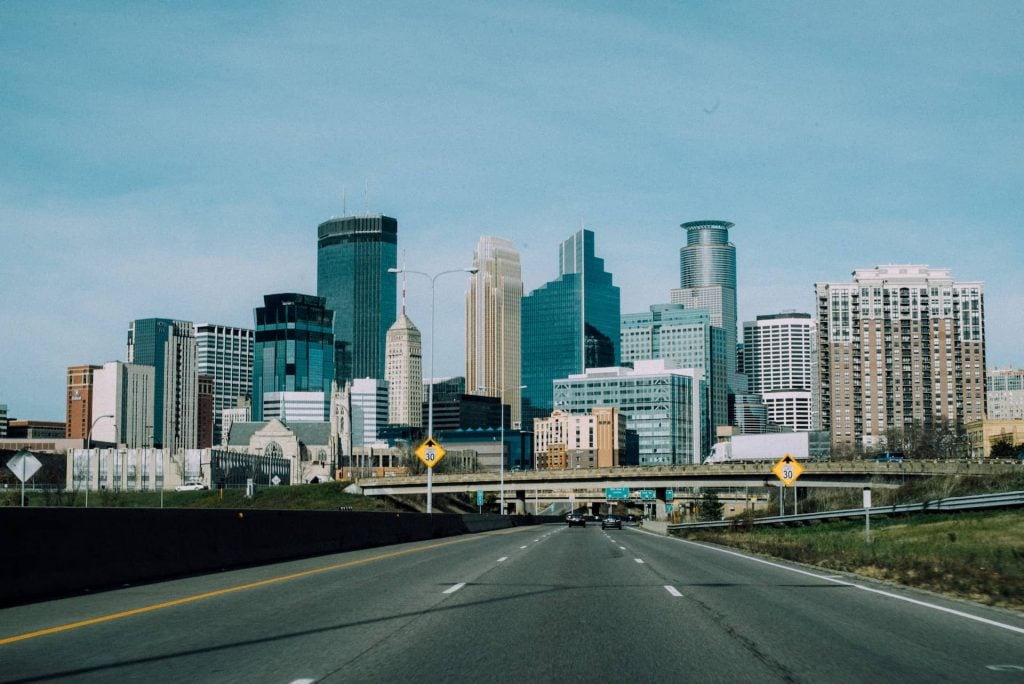
Hamline Midway is a neighborhood between the Twin Cities, and is one of the best St. Paul neighborhoods to buy a house for those looking to relocate to northern St. Paul suburbs. Most residents here own their homes and enjoy:
- The walkable neighborhood
- Bicycle-friendly atmosphere
- Hamline University
- Newell Park
- The abundant shopping opportunities.
The public schools here include Hancock/Hamline Magnet Elementary School and Galtier Magnet Elementary School for young children, and Leap High School for high schoolers.
The real estate market here has shown a drop in home prices since last year, prompting houses to sell in just 17 days on the market. The housing market here is somewhat competitive, with most homes selling for the list price and hot homes selling for 2% above the list price. The sale-to-list price for homes here is 102.6%, showing a 1.5-point increase from last year.
Saint Anthony Park
Population: 7,326
Median Income: $94,553
Median Home Price: $347.4K
Saint Anthony Park in St. Paul is a great residential neighborhood for those who want to split the distance between the Twin Cities. This neighborhood offers fun nightlife, low crime ratings, diversity, and a family-friendly atmosphere.
The main features of this neighborhood are the nightlife, Midway Stadium, Urban Growler, North Saint Anthony Park, Les Bolstad Golf Course, Celtic Junction Arts Center, and proximity to Hamline University.
The real estate market here shows that home prices are down nearly 13% since last year, with most houses selling in 29 days on the market. The housing market is somewhat competitive, meaning the average home sells for 1% below the list price, and hot homes sell for 2% above the list price.
Thomas Dale
Population: 17,049
Median Income: $66,919
Median Home Price: $169.2K
Thomas Dale is one of the best St. Paul neighborhoods for relocation due to the mixture of a suburban family feel and a bustling urban vibe. This neighborhood features many young professionals, small families, and liberal residents who enjoy the restaurants, numerous cafes, parks, and nightlife opportunities.
Thomas Dale typically ranks as one of the most diverse Saint Paul neighborhoods, along with one of the lowest-cost places to buy homes for sale in St. Paul. Residents here rank the neighborhood highly due to the high safety rating, high diversity rating, and proximity to the downtown area.
Some of the most notable features of this neighborhood include:
- The Calvary Cemetery
- Oakland Cemetery
- Minnesota Transportation Museum
- Bethesda Hospital
- Como Park
- Frogtown Farm and Park
- The diversity and quality of the public schools.
Many of the single-family homes for sale in Thomas Dale are located in Frogtown near the Dale Street metro stop, like some nice five-bedroom residences on Sherburne Avenue.
Frequently Asked Questions: The Best St. Paul Neighborhoods
There are frequently asked questions about downtown and the surrounding St. Paul neighborhoods that can help new homeowners figure out the best area to purchase a property.
How does St. Paul compare to Minneapolis?
There are a few key differences and similarities between Saint Paul and Minneapolis:
- Size: Minneapolis is home to over 430,000 residents, while St. Paul has just over 300,000 residents.
- Cost: Saint Paul is much cheaper than downtown Minneapolis. St. Paul’s median single-family home price is $240K, whereas Minneapolis’ single-family home price is $305K.
- Transportation: Both cities offer public transportation, with the average commute time between 22-24 minutes to downtown St. Paul or downtown Minneapolis.
Who are the top employers in St. Paul?
The top employers to work for in Saint Paul are the following:
- Siemens
- ACS Group
- Ecolab
- Thomson Financial
- St. Paul Fire & Marine Insurance
- 3M Company
- Examiner.com
- Cargill
- Bremer Bank
- H.B. Fuller
- The Wine Company
- Patterson Companies
- Wells Fargo
- Target
- Medtronic
- U.S. Bank
- Boston Scientific
- General Mills
What’s the housing market like in St. Paul?
The housing market is rapidly changing in Saint Paul. The median home price is $266K, with the price rising 0.8% since last year. Most homes sell after 27 days on the market. Some homes receive multiple offers, and the average home sells for the listing price. The sale-to-list price in St. Paul is 100.8%, with 40.1% of homes selling above the listing price.
What are the Best areas to live in Saint Paul?
There are certain areas that are considered the best St. Paul neighborhoods, including the following:
- Hamline Midway
- West Seventh
- Macalester Groveland
- St. Anthony Park
- Battle Creek
- Como Park
- Highland Park
- Greater East Side
- Summit Hill
- Dayton’s Bluff
- Inver Grove Heights
- Roseville
- Thomas Date
- Merriam Park
Is St. Paul a nice place to live?
St. Paul is typically considered a very nice place to live due to the friendly neighbors, walkable atmosphere, low cost of living, family-friendly areas, green spaces, rich history (which reflects in lovely home styles like Gilded Age and Victorian Homes), ample food options, and access to nature. Plus, residents of St. Paul enjoy ample job opportunities, outdoor activities, four-season weather, and restaurants, cafes, and bars.
How many neighborhoods does St. Paul have?
There are numerous St. Paul neighborhoods within the city limits. There are currently 17 St. Paul neighborhoods, and each has its own personality, atmosphere, and ambiance.
Every neighborhood has its own transportation system, restaurants, cafes, cost of living, parks, and housing styles as well.
Some St. Paul neighborhoods are best for young professionals, whereas others are better for families with children. The best thing to do before choosing a place to buy, or rent, is to look at the vibe of each neighborhood and the pricing per square foot.
Is St. Paul expensive to live in?
St. Paul is not an expensive city to live in. This city is actually cheaper than the national average, with groceries, transportation, and healthcare being some of the only utilities that are higher than the national average. Homes for sale cost 10% less than the national average, utilities are 2% cheaper, and food is 7% cheaper.
Overall, the average home price comes to just below $400K for St. Paul, with the average monthly rent coming to $1,413 for rental housing. Compared to the state average, the total cost of living in St. Paul is on par with the rest of Minnesota.
Is St. Paul a walkable city?
St. Paul is a walkable city in most neighborhoods and within the downtown area. Downtown Saint Paul is considered the most walkable area of the city, earning high scores for walking, biking, and transit.
Other walkable St. Paul’s neighborhoods are Summit Hill, Summit University, Hamline Midway, Macalester Groveland, Merriam Park, and St. Anthony Park. The inclusion of the metro, bus, walking paths, green spaces, parks, scooters, and electric vehicles increases the walkability of the city and the surrounding St. Paul neighborhoods.
Is downtown St. Paul nice?
Downtown St. Paul is a great area to explore for any visitor who is coming to Minnesota. For those who are looking to relocate to St. Paul, moving to the downtown area could be good for those who want to walk everywhere, rent a property, and have close access to cultural attractions, restaurants, bars, and cafes.
St. Paul is statistically only in the 16th percentile for safety compared to the rest of the cities in the United States. Therefore, St. Paul is still a safe place for solo travelers, young families, couples, and retirees.
Is St. Paul a good place to retire?
St. Paul consistently ranks among one of the top cities and locations in the United States to retire for older individuals. Saint Paul has a low cost of living, with an apartment costing around $1,200 per month, leading to annual savings of $3K to $4K per year.
Older individuals will love the easy public transportation options, walkable St. Paul neighborhoods, safe city vibe, family-friendly atmosphere, cultural attractions, and low cost of living. There are numerous entertainment venues, outdoor recreation, and activities to do outside all year long.
Final Thoughts
Overall, St. Paul neighborhoods are diverse enough to suit any person’s unique needs. The wide variety of neighborhoods within city limits all have a different vibe, demographic, and atmosphere that appeal to people of different ages and with varying interests.
Finding the right property to buy or rent can be confusing. But, with numerous properties available at a range of square footage and prices, you can easily be just a quick online search away from the home of your dreams.
A real estate agent can be your ultimate guide in this journey. Not only can they provide you with a list of potential neighborhoods based on your preferences, but they can also give you insider knowledge on the community, schools, and amenities. Plus, they can take you on a tour of the neighborhoods, so you can get a firsthand feel for the area. Contact a local eXp agent to get started.
